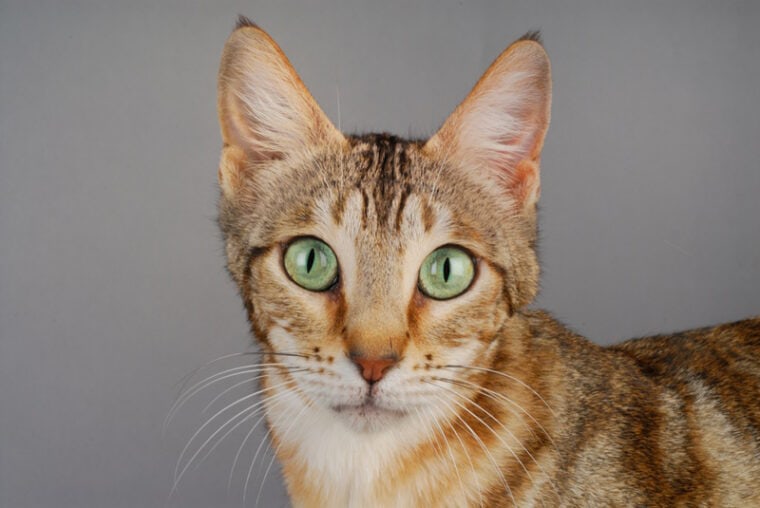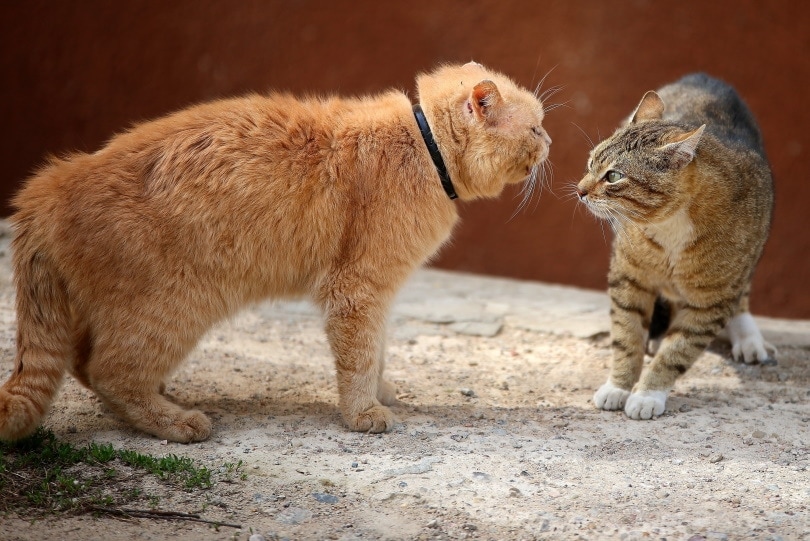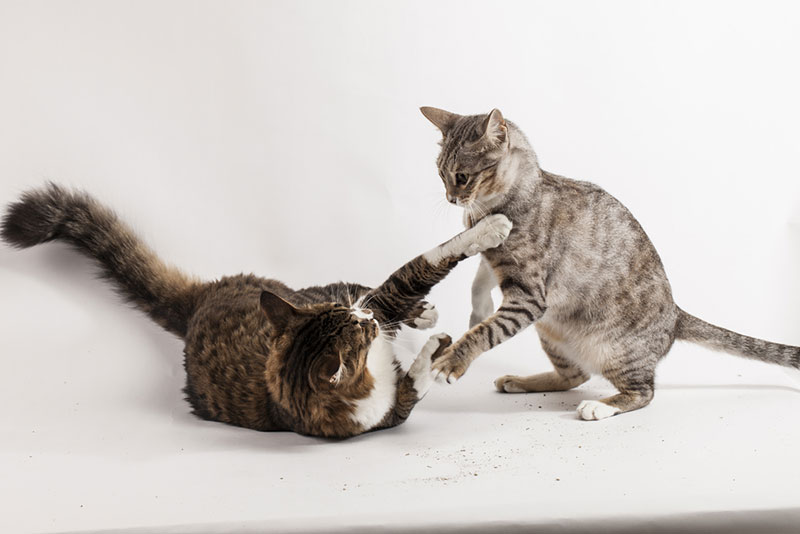
Click to Skip Ahead
In a multi-cat household, it’s common to have one cat wear the crown. Cats that display specific behaviors that overshadow the other cats are considered the dominant cat of the group.
At its core, dominance is a sign of competition. It’s a way for each cat to know their place. Cats have their reasons for doing this, and they all vary. In this post, we explain what those reasons are and how you can tell which cat is dominant in your cat group.
Why Are Cats Dominant?
Cats enjoy being social, but not as social as other animals. For instance, domestic cats don’t hunt in packs or mate for life. They’re pretty much on their own most of the time. When cats do allow other people and animals into their lives, they are selective socially within their circle.
There is no linear hierarchy within a cat colony, meaning cats don’t have roles as some animal packs do. However, conflict can stem from limited resources, territory, or hormonal fluctuations.

The 6 Signs for How to Tell Which Cat Is Dominant
1. The Dominant Cat Gets the Best Napping Spots
In a multi-cat household, you could have several napping spots for the cats, but only a couple of spots are deemed as first class. This could be a sunny spot by a window, the top of the cat tree, or a cozy spot on the bed. In any case, the dominant cat gets first dibs.
2. The Dominant Cat Is a Scrapper
Dominant cats are likely to throw the first punch to assert dominance over another cat, usually for territory or to express displeasure with something. Intact male cats, in particular, like to pick fights with other males.

3. The Dominant Cat Gets the First Pick at Treats
If you drop treats onto the floor, the dominant cat will usually have the first bite. The other cats will either find another treat or walk away entirely, depending on the cat’s personality.
4. The Dominant Cat Marks Territory
Cats are territorial, so when another animal or human invades their space, they take it upon themselves to set the boundaries. All cats mark their territory, but dominant cats can be more prone to doing so. They will rub their cheeks, flanks, and paws over areas that they claim as their own. Some cats might also use urine to mark their territory.

5. The Dominant Cat Is Usually More Muscular
Intact male cats have testosterone coursing throughout their bodies. This leads to more muscle, and a thicker head, neck, and face.
6. The Dominant Cat Initiates Playtime
Not all dominant cats will initiate play time, but if they are set on first dibs for anything, you can bet that they’ll join in on the fun, no matter what.

When Is Dominance a Problem?
Dominance shouldn’t be confused with hostility or aggression.
How to Stop Hostile Cat Behavior
So, you believe that your dominant cat is being hostile. What’s the next step?
Modifying cat behavior takes time, as there are many steps and conditions to consider, but generally, there are three areas you want to address.

The Cat Colony
Have you brought a new cat into the home? Is one cat reaching sexual maturity? Is one cat being attacked more than the others? Pay attention to your cats’ relationships and make adjustments based on what you see. All cats need freedom from pain and discomfort, so aggressive cats need to be separated from the other cats to prevent injury. This doesn’t have to be the norm forever, but cats need time to be introduced, socialized, and adjusted to new animals, people, and territory. Otherwise, their stress builds, and they take it out on other pets or worse, you.
The Environment
The only way to know if an environment is good for cats is based on the cats’ behaviors. Cats need the freedom to express their normal, instinctual behaviors like hunting, climbing, and scratching, so your cats should have everything they need to satisfy these behaviors. The more resources are available, the less hostility there will be (ideally).
A good place to start is by adding more litter boxes, cat trees, scratchers, tunnels, and water fountains to mimic the great outdoors. You can even go a step further and add cat-friendly plants or build a catio so your cat has a space to decompress.
Your Cat’s Health
Sometimes cat aggression is a sign of physical pain and discomfort. If you notice sudden behavior changes in your cat, call the veterinarian and schedule a nose-to-tail examination.
Conclusion
Cats are hard to read, but picking out the dominant cat in a group is fairly simple. However, dominance shouldn’t be confused with hostility. If you notice your cat acting hostile toward the other cats or people, it’s time to take action.
Featured Image Credit: COULANGES, Shutterstock







